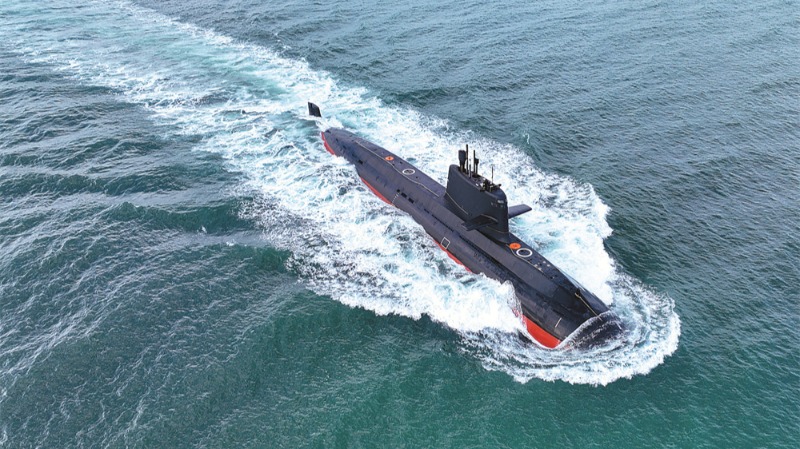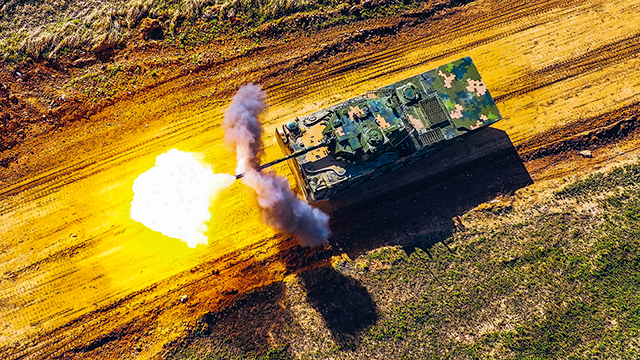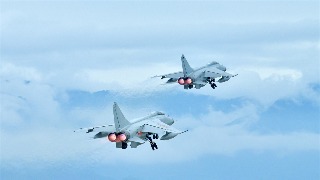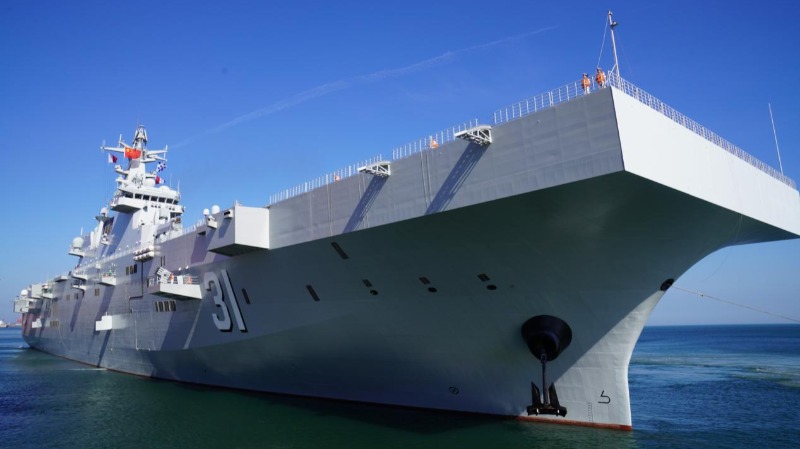By Liang Chunhui
梁春晖
The Japanese Ministry of Defense (JMOD) recently unveiled in "Defense of Japan 2024" the latest design details of the Aegis system equipped vessel (ASEV), a warship serving as the alternative to the now-defunct Aegis Ashore ballistic missile defense (BMD) system. JMOD claimed that it will become the world's most advanced Aegis system equipped warship upon completion.
近日,日本2024年防卫白皮书公布最新的宙斯盾战舰设计细节,日本防卫省将其定义为宙斯盾系统搭载舰,作为已下马的陆基宙斯盾反导防御系统的替代品。日本防卫省称其“建成后将成为全球最先进的宙斯盾战舰。”
Equipped with land-based Aegis system
搭载陆基宙斯盾系统
In an effort to share the operational pressure of the eight existing Aegis-equipped destroyers of the Japan Maritime Self-Defense Force (JMSDF), Japan had initially planned to introduce two Aegis Ashore BMD systems. However, the plan was eventually canceled due to a variety of reasons.
为分担日本海上自卫队现役8艘宙斯盾驱逐舰的作战任务,日本一度计划引进2套陆基宙斯盾反导防御系统,但由于种种原因,这一引进计划最终被取消。
Subsequently, JMOD introduced a plan to adapt the Aegis Ashore BMD system for ship-based use. In the 2023 defense budget, it was clarified that Japan would develop two ASEVs with a standard displacement of 20,000 tons based on the two previously planned Aegis Ashore BMD systems as alternatives to the now-defunct Aegis Ashore ballistic missile defense (BMD) system. The design plan for this type of vessel underwent several upgrades and refinements, ultimately resulting in a 12,000-ton version unveiled in "Defense of Japan 2024."
随后,日本防卫省推出陆基宙斯盾反导防御系统舰载化方案,并在2023年度防卫预算案中明确:以2套陆基宙斯盾反导防御系统为基础,发展2艘标准排水量2万吨的宙斯盾系统搭载舰,替代被取消的陆基宙斯盾反导防御系统。该型舰的设计方案几经迭代细化,最终形成2024年度防卫白皮书公开的1.2万吨级方案。
Focus on missile interception capabilities
聚焦反导拦截功能
According to information released by JMOD, the ASEV is designed to be 190 meters long and 25 meters wide, with a standard displacement of 12,000 tons, which is nearly 4,000 tons more than Japan's current Aegis destroyers of the Maya class. The ASEVs will feature128 Mk41 Vertical Launch System (VLS) cells, 32 cells more than those of the Mayaclass, capable of loading and launching anti-air and anti-missile weapons such as Standard-6 long-range ship-to-air missiles and Standard-3IIA enhanced midcourse anti-missile interceptor missiles.
根据日本防卫省公开信息,宙斯盾系统搭载舰设计长190米、宽25米,标准排水量1.2万吨,比日本现役宙斯盾驱逐舰摩耶级多了近4000吨。该型舰将搭载128个Mk41垂直发射系统发射单元,比摩耶级多32个,可以装载和发射标准-6远程舰空导弹、标准-3ⅡA增强型中段反导拦截弹等防空反导武器。
In terms of detection systems, it will be outfitted with the AN/SPY-7 solid-state phased array radar. The detection capabilities of two such radar systems can cover the entire Japanese mainland. When integrated with the air defense missile system, it can effectively detect and intercept long-range, medium-range, and short-range ballistic missiles as well as cruise missiles, and even hypersonic weapons. The maximum interception range of the system is 1,500 kilometers and its maritime fleet air defense range is 370 kilometers.
探测系统方面,宙斯盾系统搭载舰的AN/SPY-7固态有源相控阵雷达的探测能力, 2套该雷达系统的探测范围可覆盖日本本土全域。其与防空导弹系统结合,可有效探测和拦截远/中/近程弹道导弹和巡航导弹,甚至具备拦截高超音速武器能力。该系统的最大拦截距离1500千米,海上编队防空距离370千米。
In addition, it reserves ample expansion space to accommodate long-range attack or anti-satellite weapons.
此外,该型舰还预留了足够的扩展空间,用于搭载远程攻击或反卫星武器。
Highlight long-range attack capabilities
突出远程攻击能力
In the future, the ASEVs will be equipped with improved Tomahawk cruise missiles and the upgraded Type 12 surface-to-ship missile (SSM) developed by Japan. With strong stealth capabilities, the upgraded Type 12 SSM can realize long-range precision strikes against both sea and land targets, which will enhance the ability of the JMSDF to perform long-range strikes on both sea and land as well as enable standoff strike capability.
未来,宙斯盾系统搭载舰将配备改进型“战斧”巡航导弹和日本研发的12式改进型岸舰导弹。12式改进型岸舰导弹具备较强的隐身性能,可对海、陆目标实施远程精确打击,弥补日本海上自卫队远程对海、对陆打击能力的不足,使其具有防区外打击能力。
According to the JMOD, the two ASEV vessels will primarily be responsible for ballistic missile surveillance and defense tasks after they are commissioned, thereby alleviating the operational pressure on Aegis destroyers of the JMSDF. However, judging from the information published in "Defense of Japan 2024" and the combat capabilities of this type of vessel, Japan is more likely to seek alternatives to the now-defunct Aegis Ashore ballistic missile defense (BMD) system. The ASEVs can remain on the front lines of Japan's home waters for extended periods to detect, track, and intercept ballistic missiles from potential adversaries. They can also form combat groups with light aircraft carriers, Aegis missile destroyers, and other destroyers and frigates. Additionally, they can engage in joint operations with other military forces in the Indo-Pacific region, playing a crucial role in assisting US forces in detecting and intercepting ballistic and hypersonic missiles.
日本防卫省宣称,2艘宙斯盾系统搭载舰服役后,主要负责弹道导弹监视防御任务,缓解日本海上自卫队宙斯盾驱逐舰的作战压力。然而,从日本2024年防卫白皮书公布的信息和该型舰战技性能看,日本很可能采取“移花接木”的手段。宙斯盾系统搭载舰既能长时间位于日本本土海上前沿,对潜在对手的弹道导弹进行探测、跟踪和拦截,同时能与轻型航母、宙斯盾导弹驱逐舰和其他驱逐舰、护卫舰一起进行作战编组,还可以与印太其他军事力量进行联合行动,特别是在协助美军探测和拦截弹道导弹、高超音速导弹方面发挥重要作用。
Given the unique characteristics of the maritime battlefield around Japan, the large size and limited defensive capability of the ASEVs will generally prevent them from performing ballistic missile defense missions independently during wartime, so they will still need to operate in collaboration with other vessels. Therefore, it is not optimistic for Japan to achieve the improvement in both ballistic missile defense and fleet air defense capabilities as it had planned. The role of this type of vessel in the waters around Japan, where the strategic depth is relatively low, is still to be observed.
鉴于日本周边海上战场环境的特殊性,战时大多数情况下,体型庞大、防御能力有限的宙斯盾系统搭载舰无法单独执行弹道导弹防御任务,仍需与其他舰艇编组行动。日本最初计划的弹道导弹防御和编队防空能力“双升”“共赢”局面并不乐观。在战略纵深较浅的日本周边海域,该型舰能在多大程度上发挥作用尚需观察。




















